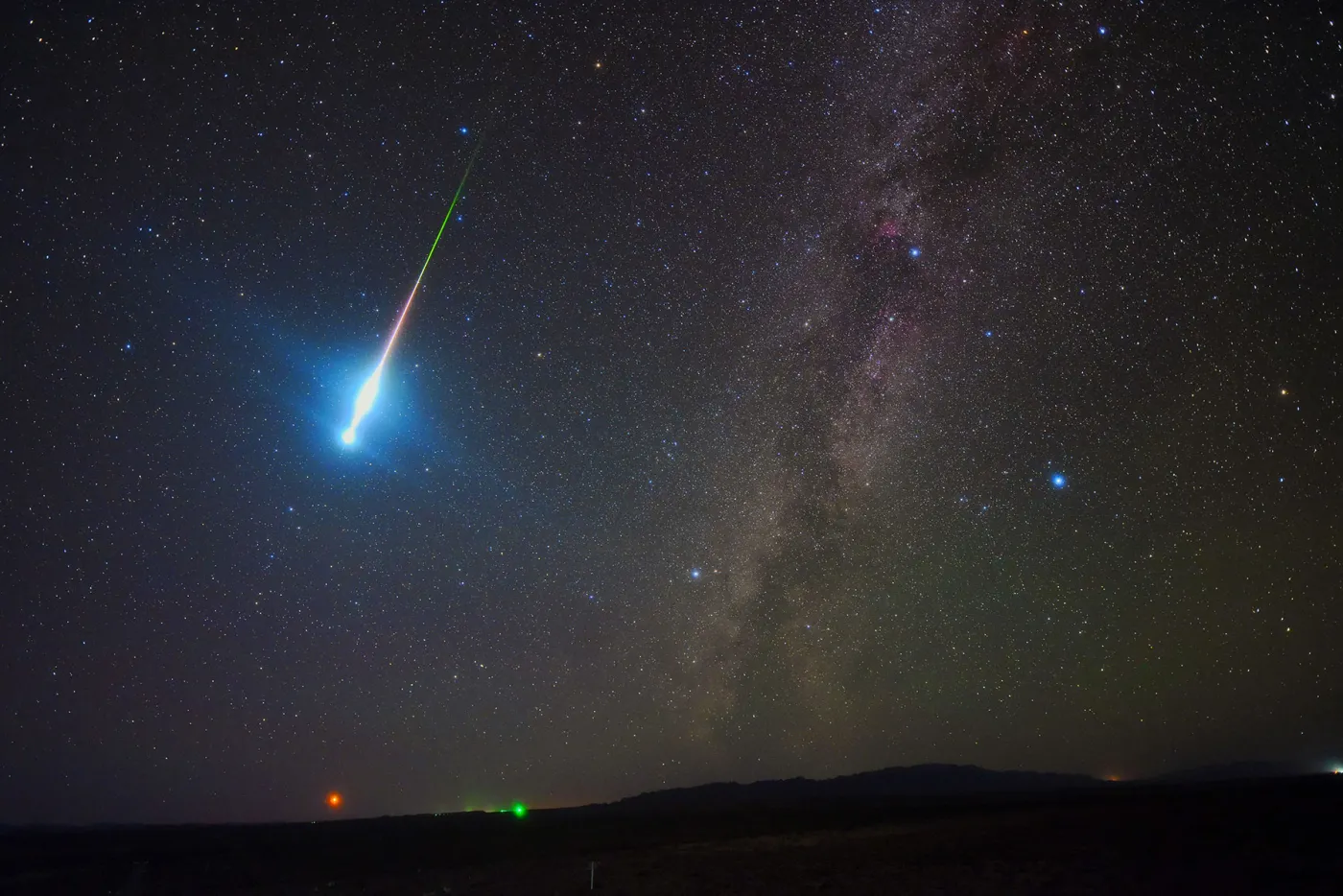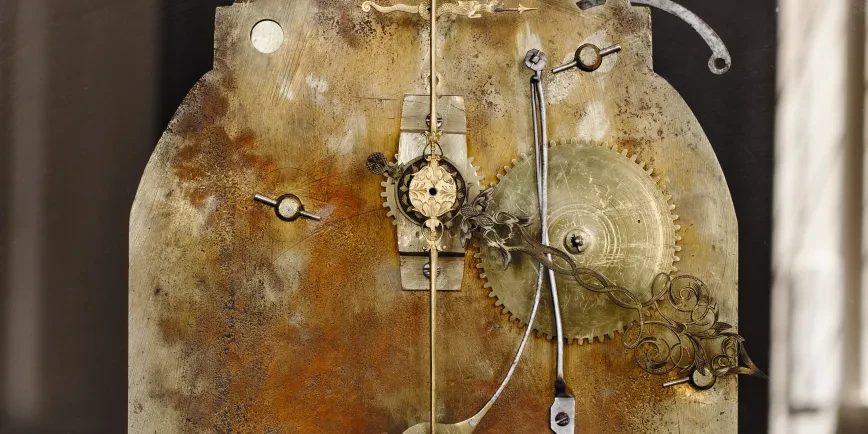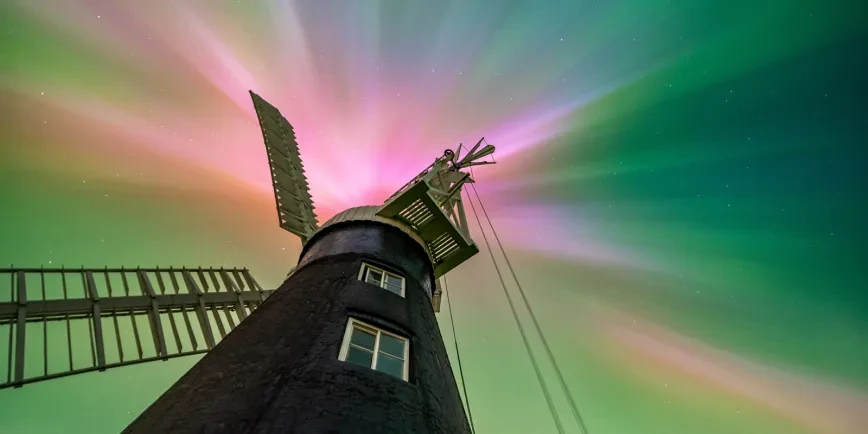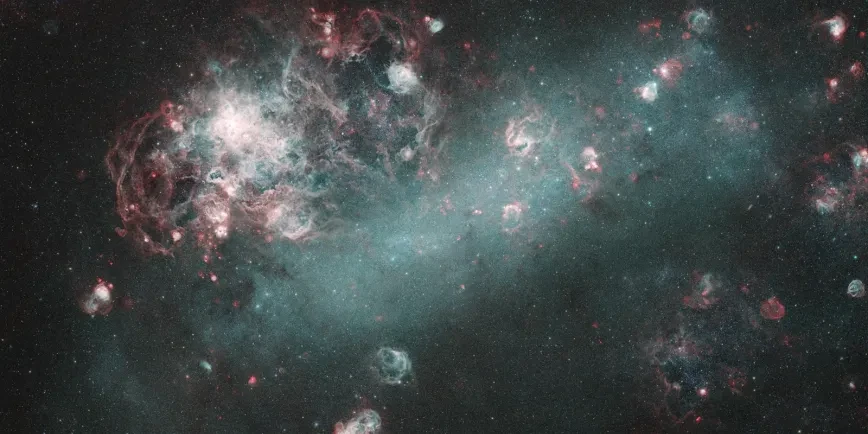
The Perseid (Per-see-id) meteor shower is one of the most dramatic things to see in the night sky between July and August, and is a highlight of many meteor hunters’ calendars due to its high hourly rate and bright meteors.
In 2026 the Perseid meteor shower is active between 17 July and 24 August. The shower will peak on 13 August.
Find out how to see the display below.
Never miss a shooting star
Sign up to Royal Observatory Greenwich's space newsletter for exclusive astronomy highlights, night sky guides and out-of-this-world events.
What is the Perseid meteor shower?
As comets get close to the Sun, they heat up and pieces break off. If the debris ends up in the Earth’s path around the Sun, it can slam into our atmosphere at speeds of between 7–45 miles per second. The actual speed at which a meteor enters our atmosphere depends on the combined speed of the Earth and the debris itself.
The average speed for a Perseid meteor is 36 miles per second. The air in front of the meteor is squashed and heated to thousands of degrees Celsius. The smaller meteors vaporise and leave behind a bright trail of light. Larger meteors can explode as fireballs.
Giovanni Schiaparelli was the first to realise the connection between meteor showers and comets. Lewis Swift and Horace Tuttle discovered a new comet (which now bears their names) two years before Schiaparelli announced that the orbit of this comet coincides with the path that the source material for the Perseids take.
Find out the difference between an asteroid, a comet, a meteor, and a meteorite in the video below.
What causes the Perseid meteor shower?
The Perseids are caused by the Earth slamming into the debris left behind by comet 109P/Swift-Tuttle.
Find out more key meteor shower dates throughout the year here.
When is the Perseid meteor shower in 2026?
In 2026 the Perseid meteor shower is active between 17 July and 24 August, with the number of meteors increasing every night until it reaches a peak in mid-August, after which it will tail off. This year the peak falls on the night of 13 August.
| Shower name | Normal limits | Date of maximum 2026 | Predicted rate per hour at maximum | Description |
|---|---|---|---|---|
| Perseids | 17 July - 24 August | 13 August | 150 | Many bright fast meteors with trains. Associated with Comet Swift-Tuttle. |
How to see the Perseid meteor shower
You can look out for the Perseids wherever you are, but there are certain kinds of places that will increase your chances of spotting meteors.
Plan ahead and check the weather forecast. If it is likely to be inclement, find a different location or go out on a different day. The days leading up to the peak are usually better than the days after.
Reduce the amount of light pollution in your field of view. This could mean heading out to the countryside, a nearby park or even turning your back to street lamps if you're not able to go anywhere. Give your eyes at least 15 minutes to adjust to the dark so that you can catch more of the fainter meteors – this does mean that you should avoid looking at your phone!
Meteors can appear in any part of the sky so the more of the sky you can see, the better. Find an area with a clear view of the horizon away from trees and buildings. Binoculars and telescopes are not necessary as they will restrict the size of the sky that will be visible to you.
The meteors will seem to originate from the constellation of Perseus. You can use a stargazing app to find the exact location you should look.
What time is best to see the Perseid meteor shower?
The radiant of the Perseids is actually always above the horizon as seen from the UK, which means that observers in the UK should be able to see some meteors as soon as the Sun sets. Therefore, it is worth looking up in the early evening.
In 2026 the peak of the Perseid meteor shower fortunately occurs during new Moon, so conditions are ideal for seeing the peak.
The best time to see the Perseids is between midnight and 5.30am.
It is always ideal to try to spot meteors when the Moon is below the horizon or when it is in its crescent phase, otherwise it acts as natural light pollution and prevents the fainter meteors from being visible.
Why should you look out for the Perseids?
The Perseid meteor shower is one of the best meteor showers of the year because it produces bright meteors and is one of the most active.
There's also a high chance of seeing fireballs, which are very bright meteors, as well as meteors with long trains during the Perseid meteor shower.
How to photograph the Perseid meteor shower
Myths, legends and associations with the Perseid meteor shower
- Perseus was a hero who beheaded the Gorgon Medusa and later married Andromeda according to Greek myths. They had nine children together and the word ‘Perseids’ is derived from the Greek word ‘Perseides’, which refers to Perseus’ descendants.
- In some Catholic traditions, the Perseids are also known as ‘the tears of St Lawrence’, due to the peak roughly coinciding with the date the Saint achieved martyrdom.
- The Perseids are also associated with the god Priapus, who was believed by the Romans to have fertilised the fields by ejaculating on them once a year on the date the shower peaks.
Main image: The Perseid Fireball 2018 by Zhengye Tang
Meteor shower photos
See a selection of incredible images from the annual Astronomy Photographer of the Year competition.




Meteor shower photos
See a selection of incredible images from the annual Astronomy Photographer of the Year competition.
Explore the universe with Royal Observatory Greenwich astronomers and curators.













